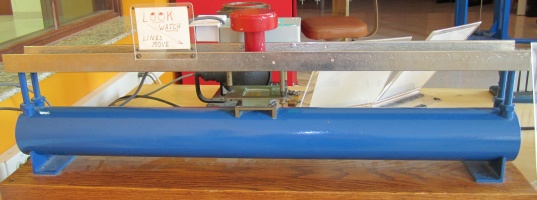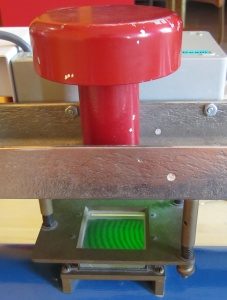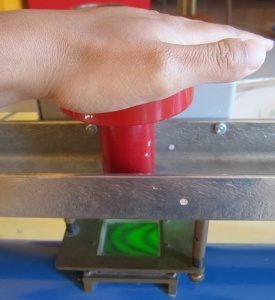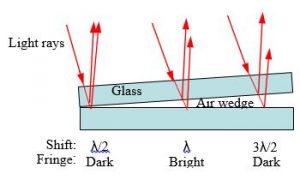
|
|
 |
 |
Light Waves as Measuring Units
Here we have two stacked glass squares. One is attached to the blue solid metal shaft, and the other to the channel iron. There is a Mercury light source that shines on the glass blocks when it is turned on.
WHAT TO DO:
- Push the small red button on the grey box to turn the light on.
- Look at the small glass square below the large red knob. You should see a green light with dark bands.
- Push down on the large red knob.
WHAT TO DO:

- Push the small red button on the grey box to turn the light on.
- Look at the small glass square below the large red knob. You should see a green light with dark bands.
- Push down on the large red knob.
WHAT HAPPENS TO THE SPACING OF THE DARK AND BRIGHT BANDS IN THE SQUARE?
Answer:
The spacing of the bright and dark bands changes!
What is going on?
The two glass squares are separated by ~0.001 in leaving a thin film air wedge between them. Pushing on the red knob bends the channel iron slightly moving the top glass square down, while the blue shaft is rigid and doesn’t allow the second glass square to move.

The alternating dark and bright lines, called fringes, result from the interference pattern of light reflected from the upper and lower sides of the air wedge. Moving the plates closer together or farther slightly changes the thickness of the air wedge, changing the interference pattern, and the fringes appear to move sideways. The displacement of one fringe is equivalent to a shift of ½ of the wavelength of the Mercury light source (λMercury=0.00027mm).